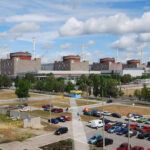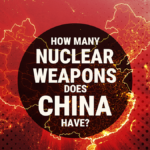Are we ready for the unimaginable? Ensuring nuclear safety post-Fukushima
By Rumina Velshi | March 11, 2021
 Experts from the International Atomic Energy Agency inspect the No. 3 reactor at the Fukushima Daiichi nuclear power plant in Fukushima Prefecture on May 27, 2011. (Photo by Kyodo News Stills via Getty Images)
Experts from the International Atomic Energy Agency inspect the No. 3 reactor at the Fukushima Daiichi nuclear power plant in Fukushima Prefecture on May 27, 2011. (Photo by Kyodo News Stills via Getty Images)
Editor’s note: This article is part of a collection of expert commentary on nuclear safety published on the tenth anniversary of the Fukushima disaster, produced in a collaboration between the Project on Managing the Atom at Harvard Kennedy School and the Bulletin.
As we remember those lives lost, and still affected, by the Great Tohoku Earthquake in northeastern Japan and the aftermath of the nuclear accident at the Fukushima nuclear site in March 2011, we must renew our commitment to ensure the safety and security of nuclear facilities around the world.
The nuclear sector learned important lessons from the crisis a decade ago—and enacted important reforms and improvements. But we must never become complacent. There is more we can do.
We must further improve our culture of safety. That includes conducting emergency exercises under scenarios that may seem improbable. Such exercises help to build knowledge, experience, and operational excellence. They help create an environment in which decisions are made based on fact—and considerations go beyond the immediate short-term risks, whether those decisions are made by regulators, a board of directors, or policy makers.
We must establish national and international standards and guidance on post-accident recovery. No one likes to imagine another nuclear accident. But it’s our responsibility to plan for every possibility, no matter how unlikely. More work needs to be done on establishing guidelines on returning populations to impacted sites—and better understanding the health effects of low-dose radiation.
We must continue to improve the ways in which we communicate with people—and, in particular, how we listen and talk with them about risk. On one hand, we have more ways than ever to reach out to the general public. On the other, it can be difficult these days to cut through the noise, especially with a message that can be technical in nature. It is incumbent on operators and regulators to find ways to communicate that resonate and have an impact—so more people understand the modern reality of the nuclear sector.
We must establish safety protocols and emergency preparedness priorities that keep pace with today’s challenges. We live in a time when natural disasters are occurring with greater frequency and severity. The recent power outages in Texas and beyond caught authorities by surprise and caused terrible consequences. As our climate changes and becomes more volatile, we need to explore the need for infrastructure improvements that may not be directly nuclear-related—but can nevertheless improve nuclear safety and preparedness.
We must ensure that nuclear regulation does not serve as an unnecessary barrier to the adoption of even safer forms of nuclear power. Regulators exist to protect people from risk—not from progress. Even as we strive to ensure the highest standards of safety today, we must ensure that we do not stand in the way of efficiency and innovation. Are our regulatory frameworks and requirements right for both current—and emerging—technologies? Competent and well-resourced regulators can play a valuable role in shaping a nuclear future that is both safe and innovative.
As information and technology shrink the world, as our climate changes, as new risks emerge and familiar risks endure, we must remain vigilant. We must be willing to challenge our assumptions—and change our minds. We must be focused on prevention, response and, where necessary, on mitigation.
Above all else, we must never lose sight of the fact that our priority is always safety, and collaboration is our strength.
Read more expert commentaries in this collection »
Together, we make the world safer.
The Bulletin elevates expert voices above the noise. But as an independent nonprofit organization, our operations depend on the support of readers like you. Help us continue to deliver quality journalism that holds leaders accountable. Your support of our work at any level is important. In return, we promise our coverage will be understandable, influential, vigilant, solution-oriented, and fair-minded. Together we can make a difference.
Keywords: Fukushima, Great Tohoku Earthquake, IAEA, fukushima10, nuclear accidents
Topics: Nuclear Energy, Nuclear Risk
















The only safe nuclear power plant is one that is never built!
Evidently we do not yet have enough nuclear fallout exclusion zones around the world – six at least in the UK alone. You can’t see the insanity of licensing private companies to compete in the cut-throat energy market by using weapons technology to generate electricity for sale. So it’s safety versus shareholder profits. Utter madness. Atoms for War – if we must, but renewables for peace. Period.